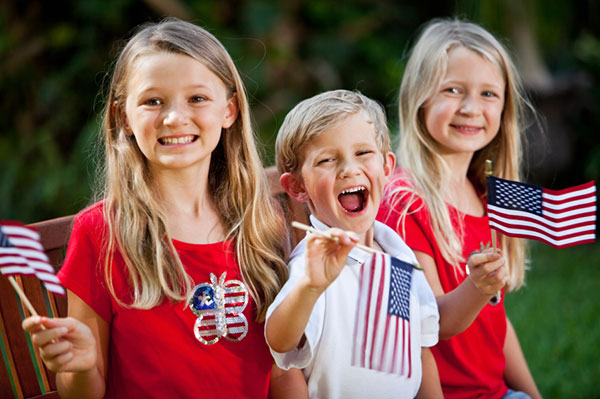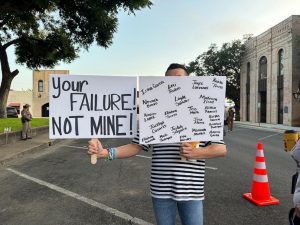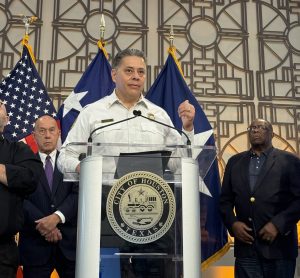
With Independence Day around the corner, our country’s traditional outdoor celebrations are likely to be busy, noisy, and crowded with parades, loud and bright firework explosions, and perhaps overpowering with smells and smoke—all things that could constitute a neurotypical child’s recipe of super summer fun. For a neurodiverse child with Autism Spectrum Disorder (ASD), these ingredients can often cause intense and overwhelming meltdowns.
Many ASD families may feel the best solution is to stay home and celebrate in a more laid-back fashion, but even then, the unknown holiday activities in our neighborhoods could still prove troublesome.Plus, exposure to public events that are going to recur is an opportune time to help a child with autism learn necessary skills to not only adapt to ever-changing environments but potentially learn to love them – all while celebrating our nation’s birthday.
Sensory overload for a child with ASD is best treated with preparation. To prepare your child, here are five tips to help your family manage the sensory experience of our nation’s mid-summer holiday. These tips are adapted from techniques used in Applied Behavior Analysis (ABA) therapy—evidence-based therapy in which behavior modifications are consistently applied and rewarded to make a meaningful change in overall behavior.
Tip One—Communicate to help forecast what could come
- Help your child to understand and envision exactly what is going to be different that day. Explore and explain all the things that could take place. Rehearse parts of the events if you can.
- Start now by talking about what your child might expect and if possible get your child’s feedback ahead of time on what your child may feel crosses a threshold into becoming “too much” for them and what might constitute a need for a break.
- Even if the event is at your house, talk about all the possible scenarios that could occur with the people who are coming, the food preparation and flavors, and the activities planned for the day.
Tip Two—Prep with plans, emotional supports
- It may be comforting for your child to know if you and he/she can use a code word, flashcard or favored technique when the child senses a situation is close to triggering a behavior. For example, in ABA terms, if the child or parent anticipates a common “antecedent” to a behavior, the child can use the code and seek a comforting reinforcement ahead of time.
- If you are going to be around people who are unfamiliar with your child’s diagnosis, do some more rehearsal with your child about preparing for and responding to being accidentally bumped, excitedly hugged, or play-wrestled with.
- If your child is into facts and history, they may appreciate knowing the real story why fireworks have become a tradition on this national holiday. So tell your child ahead of time what the historical context is and the reason for the celebration.
Tip Three—Bring physical reinforcements
- Bringing along personal favorites universally goes a long way in all scenarios, not just during new activities. If your child has some favorite toys or snacks, bring them along. If they start feeling uncomfortable, these items can sometimes be enough to remind him or her of something familiar to feel calm enough to endure or even enjoy new or unfamiliar situations.
- If you are visiting a barbecue or picnic, pack some of your child’s more familiar, favorite foods. Ask them in advance what they want to bring along so they feel empowered with a sense of control. If appropriate, rehearse with them to gently say “no, thank you” when people ask if they want to try some different food.
- Depending on your child’s comfort level, consider packing sunglasses, hats, and/or a hoodie to help your child manage visual stimulation. If the climate is not expected to be too oppressive, even a compression tank top shirt or weighted vest can be part of the planned wardrobe. Or as much as possible, let your child pick their clothes for the day to add to the comfort to the occasion.
- The sounds of the 4th are striking and intense. Your child can have a pack filled with accessible earplugs or buds to play familiar music, or even noise-canceling headphones to block some of the auditory stimuli.
Tip Four—Prepare for Sensory Overload
- Fireworks mean big crowds. If your child doesn’t do well with crowds because of multiple sensory triggers, there may be a concern that he/she could run in an attempt to get away and/or end up getting lost by mistake. For many reasons, it might be better to set up your viewing spot a bit further back from the main attraction area. This is also useful if you think your child would like frequent breaks from the activities, will need to use the restroom, or for beating the crowds home.
- Depending on where you live, fireworks may only be commonplace once a year around this holiday. While you likely cannot replicate a true display in person similar to the real event, there are numerous fourth of July fireworks video viewings, large and small, available on YouTube you with your child can watch at as high a volume and on as big a screen as your child will tolerate before the actual day’s event. Experiencing this, even on a screen will allow your child exposure to the sights and sounds in advance to get an idea of what to expect on the day of.
Tip Five: Anticipate, Participate, and Have Fun
- For some children, it is helpful to have a “job” for the day. Being a helper or “in charge” of some element of the activity will make them feel more involved and more in control of their experience. For others, try and give them as much choice as possible in terms of seating, moving around, or isolating themselves (with as much supervision as possible). Work with other family members or friends to form a buddy system to keep the child with autism feeling safe. However, you also should be prepared to escape; let your child know that they can always let you know they are overwhelmed and need to get away from the people or the place.
- Create some options for them to decompress. A small pop-up tent can sometimes serve as an escape pod if you are in an open space with lots of people. If you are visiting a place, sometimes a brief trip to the car can take tensions down a bit.
- Develop a plan if a meltdown does occur. It can be more difficult to decide and implement comfort for your child on the spot and in a crowd. Discuss beforehand what strategies you will use and what each person in your party needs to do if you all need to leave.
- Finally, your child has a meltdown, attend to them and don’t worry about the looks or concerns of others. If you prepare as best you can and remember this can be and should be a positive, fun occasion, you will get through potential challenges at this or any holiday festivities out of the ordinary.
From all of us at Centria Autism, have a safe and fun 4th of July!
Quick Facts
● 1 in 59 children have autism
● Centria Autism helps parents of children with autism navigate through the complex system of insurance, care and just knowing that they are not alone.
● Centria operates in ten states, over 3,500 experienced and trained staff and services over 2,900 children.
About Centria Autism:
Centria Autism, an operating division of Centria Healthcare, is a leading national provider of Applied Behavior Analysis (ABA) therapy for children with autism and their families. With its national headquarters in Michigan, and more than 3,500 clinical staff working in ten states, Centria’s Optimal Outcomes approach combines child-centered, evidence-based ABA with best practices to help children with ASD have the best developmental experience possible and acquire the skills to live independently and succeed in the world on their own terms.
For more information, please visit http://www.centriaautism.com .










